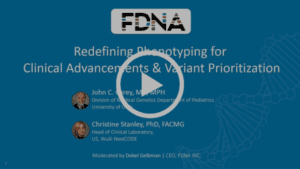The National Institutes of Health (NIH) recently launched a program to accelerate the transition of genome editing into clinical applications. Over the next six years, this Somatic Cell Genome Editing program aims to award $190 million to researchers for projects focused on creating and improving gene editing tools and delivery systems, testing the efficacy and safety of such tools, and sharing relevant knowledge and advancements.
I spoke with Elizabeth Wilder, Ph.D., about the potential impact of gene editing on healthcare. Dr. Wilder is the Director of the NIH office that oversees the NIH Common Fund, which supports the new program on Somatic Cell Genome Editing.
“Currently, even when we can find a root cause for a patient’s disease, usually we can’t fix the problem at its source,” said Dr. Wilder. “Advancements in genome editing technologies could lead to therapies that would offer patients more permanent solutions.”
While FDNA isn’t in the business of gene editing, next-generation phenotyping technologies, which power our Face2Gene application, can help doctors analyze patients’ clinical features and aid in the identification of disease-causing gene variants that may be good targets for gene editing. Take, for example, Fabry disease, a progressive, X-linked disorder. In Fabry patients, a single gene is responsible for an enzyme deficiency that causes pain and often renal failure.
If gene editing could address that error, it is possible that patients could really benefit. There is even recent work beginning with that goal, right here in Boston. But before gene editing can work its magic, clinicians need to know what disease they are treating. Fabry patients, like thousands of other patients with genetic diseases, have very long diagnostic odysseys; with an average of 10 years between symptom onset and diagnosis.
Next-generation phenotyping can speed this process along, making it easier for doctors to hone in on specific gene variants responsible for a patient’s symptoms. It helps clinicians get to the root of symptoms and diagnose patients sooner. Once the pathogenic gene variant is identified, doctors and patients are armed to make more informed and proactive decisions about management and possible treatment options.
Recent advances in genome editing technology, including the hot-button CRISPR/Cas9 technology, have made precise DNA editing possible in live cells. This program focuses specifically on somatic (non-reproductive) cell editing, which means any therapeutic changes to the disease-causing DNA will not be passed on to future generations—an important consideration for gene edits that could benefit the patient, but might harm potential offspring.
Funding opportunities are due in April and are available here; they range from improved animal models for assessing genome editors to a Dissemination and Coordinating Center for online information-sharing. The NIH is hosting a webinar on February 16th for potential applicants.


